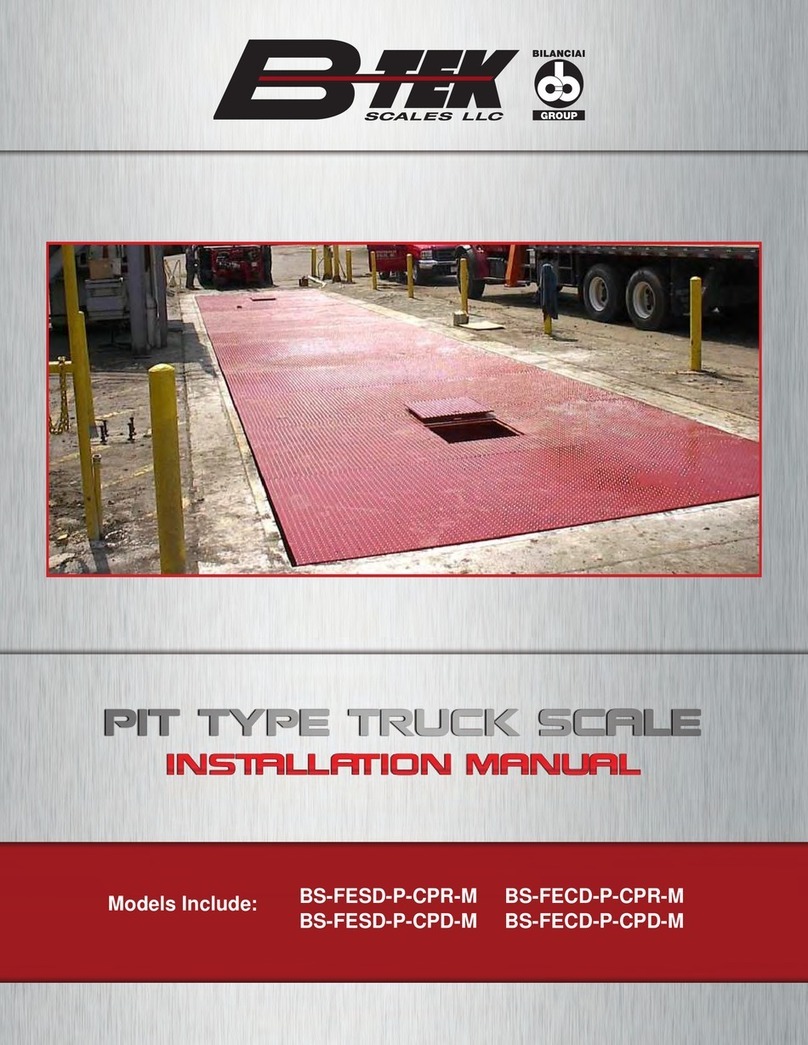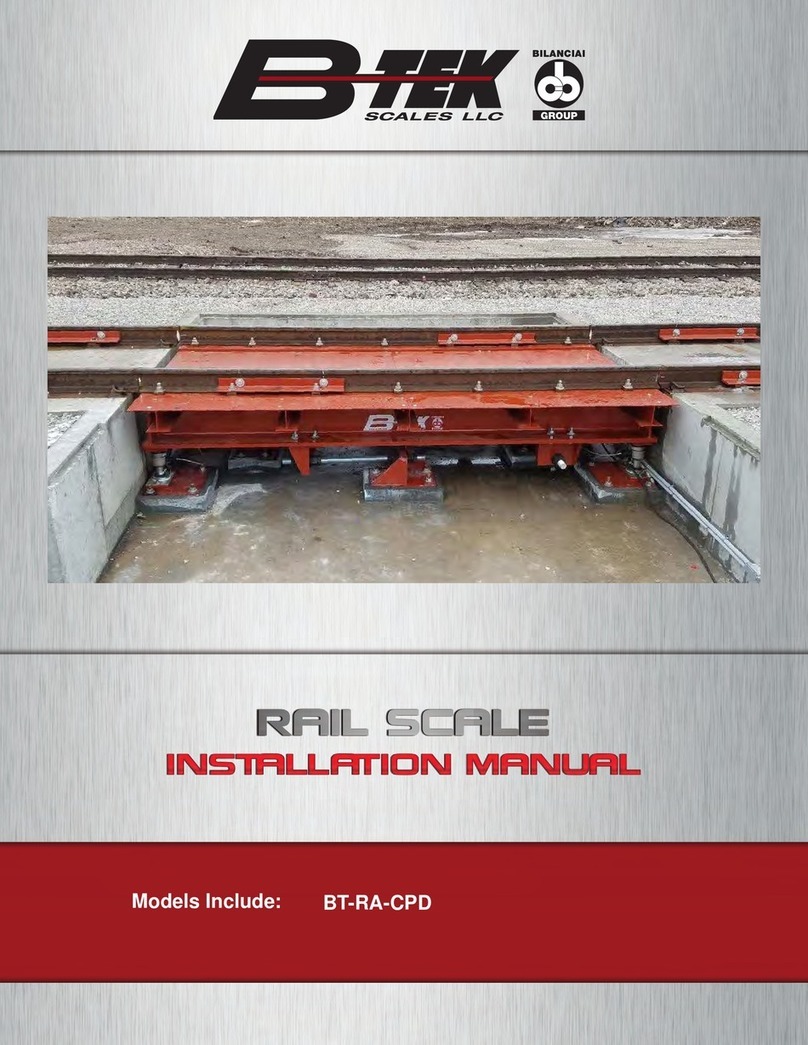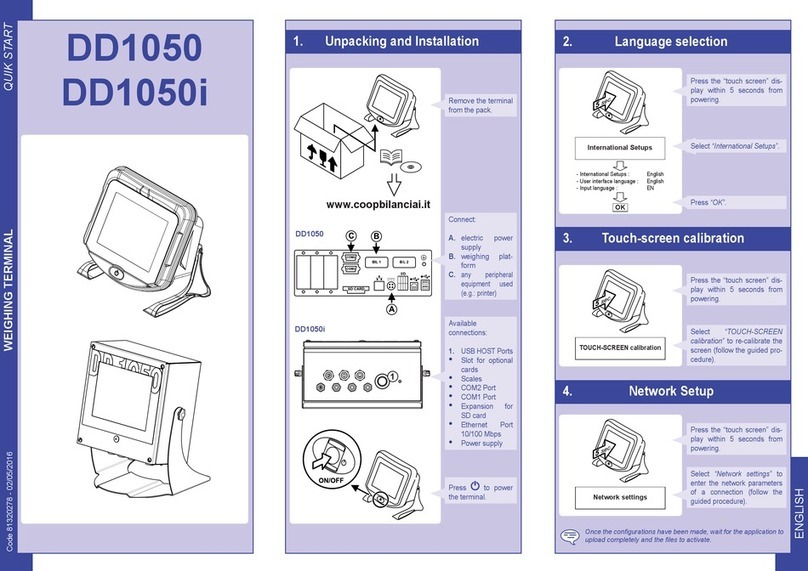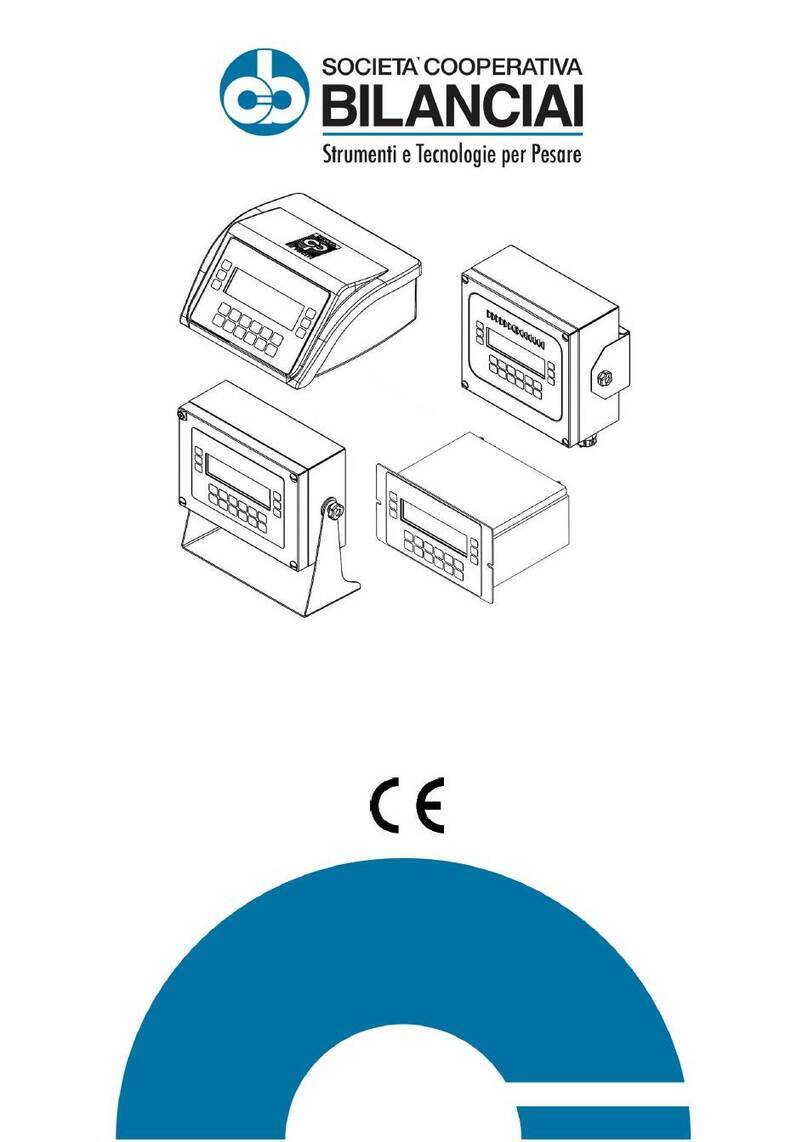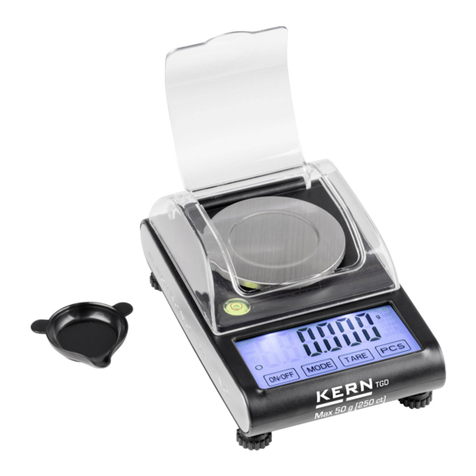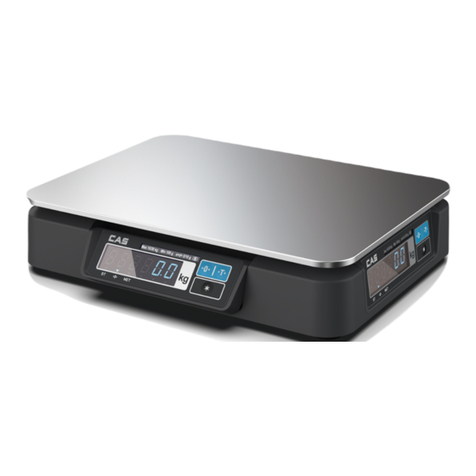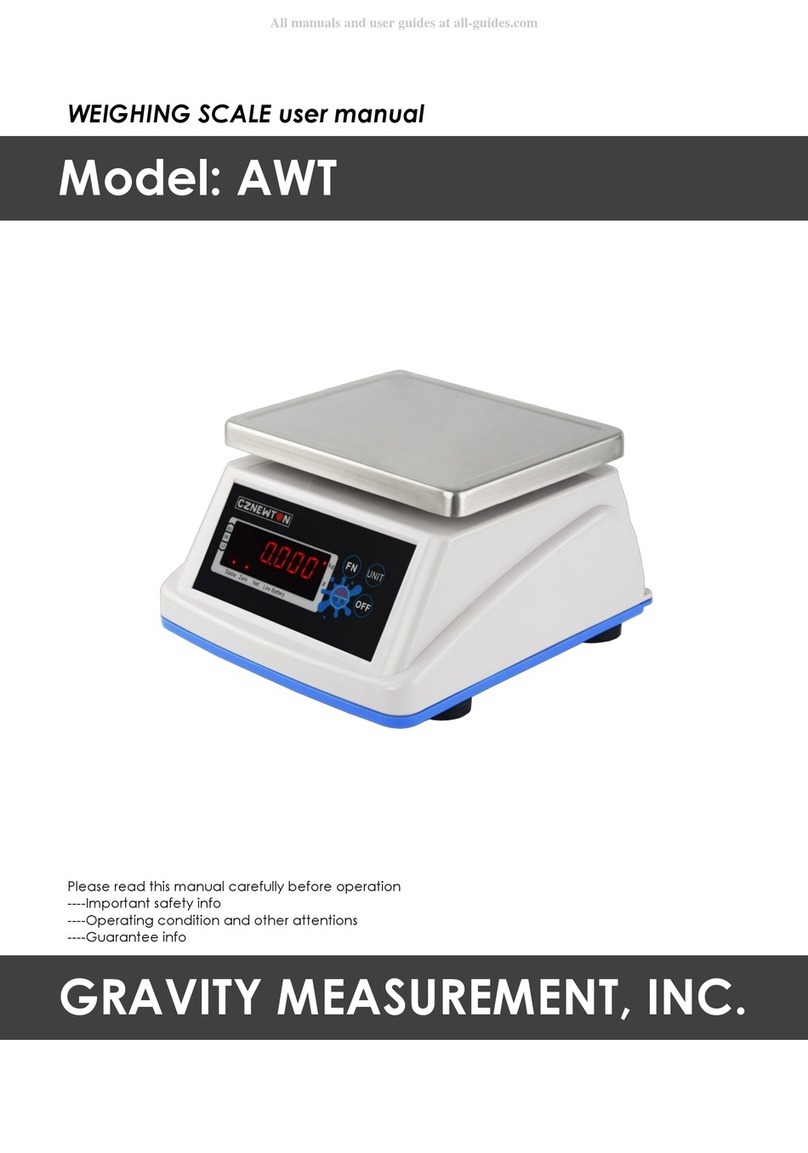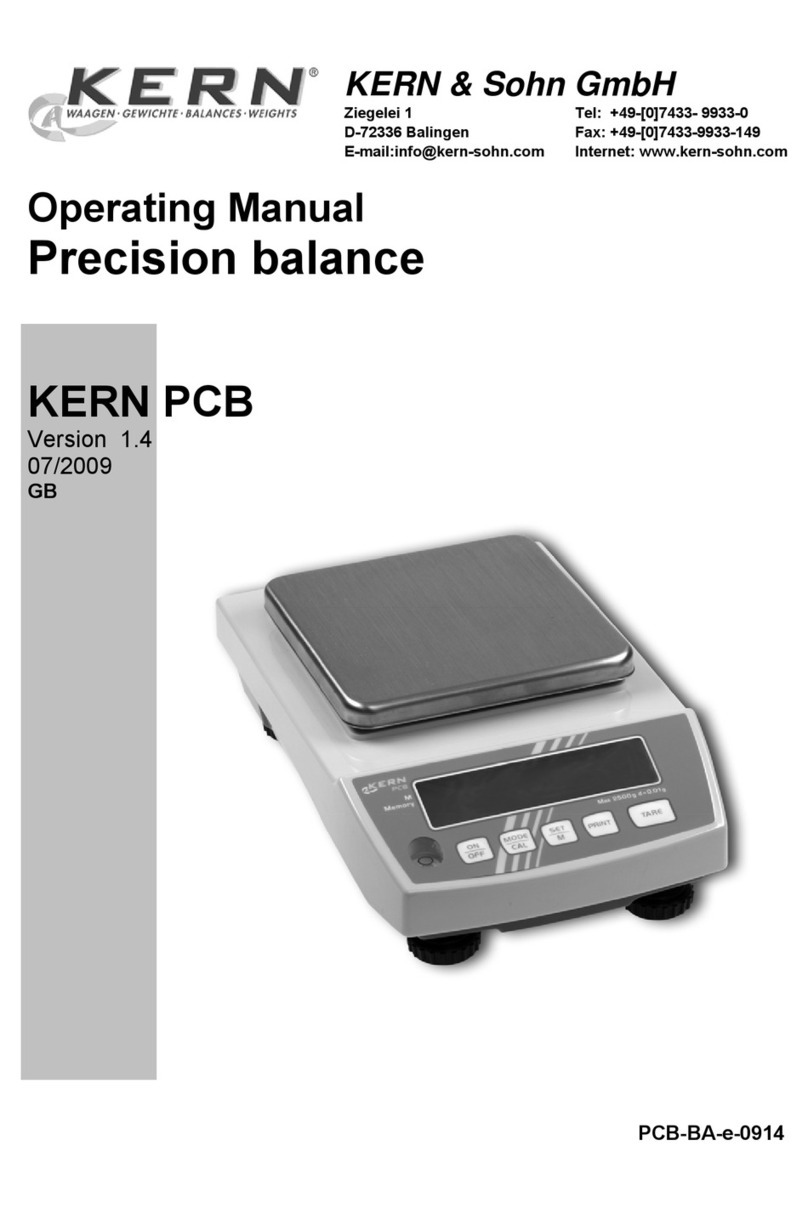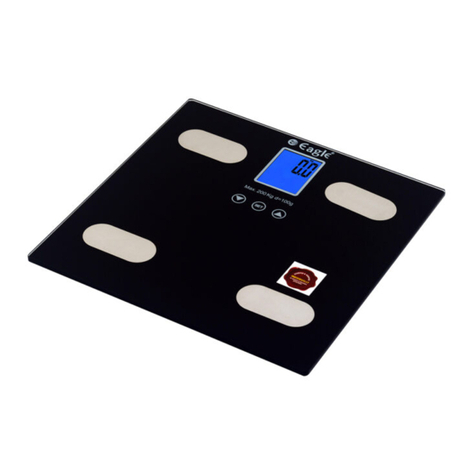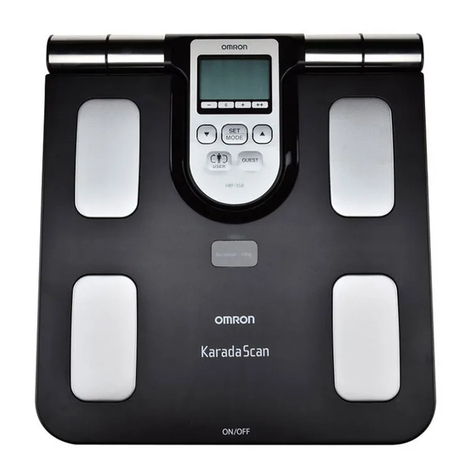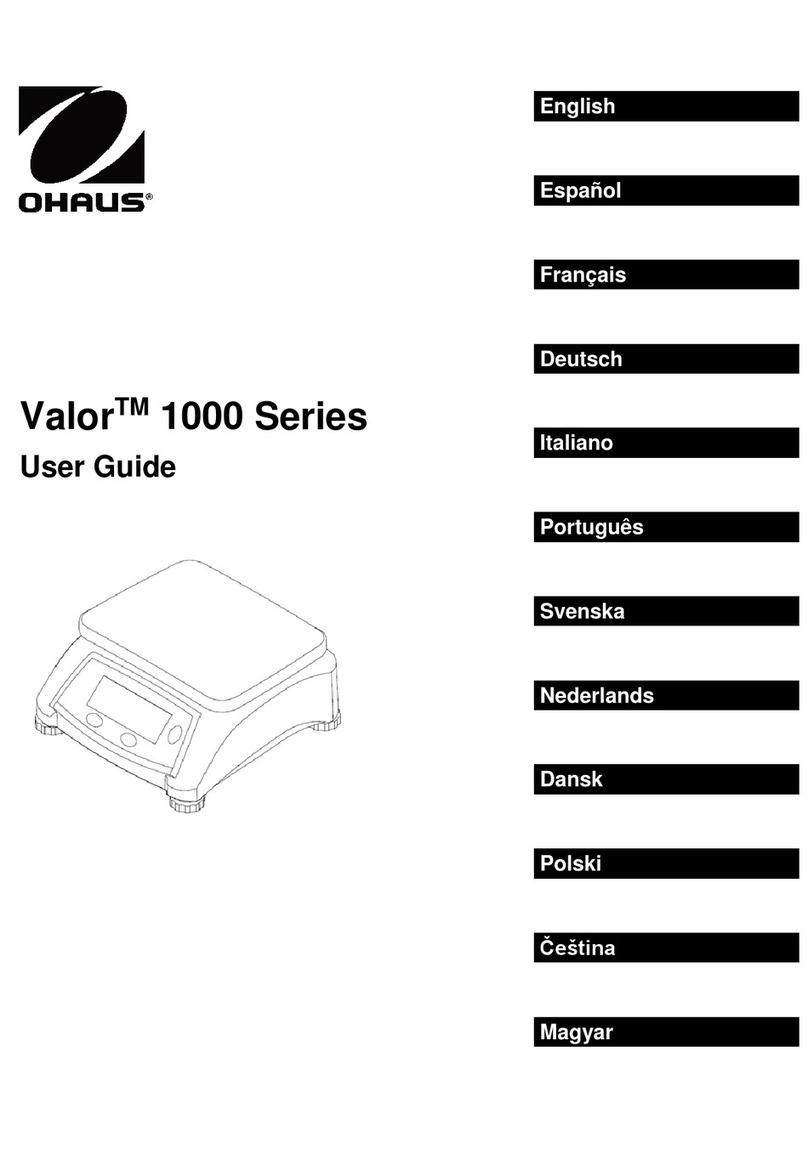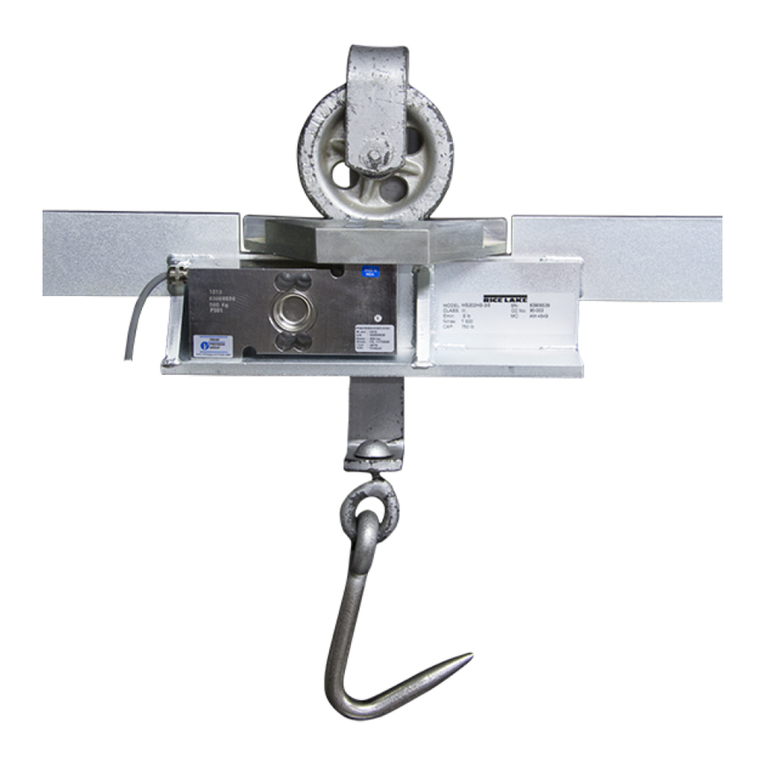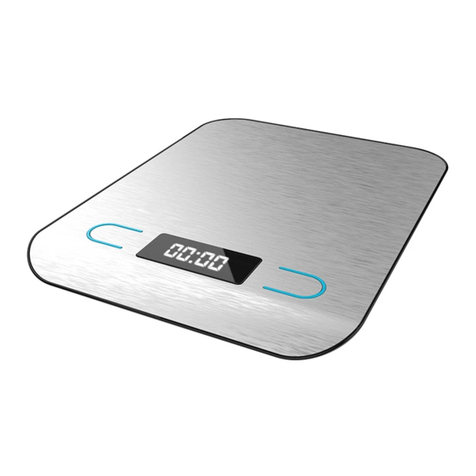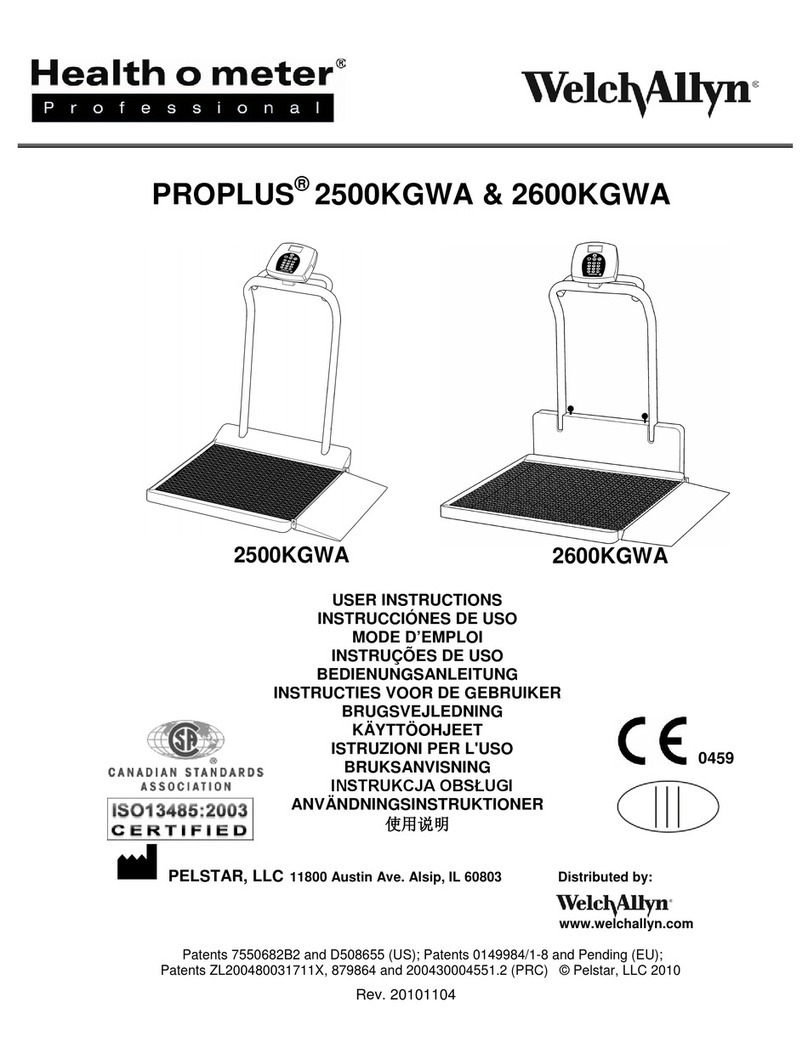Bilanciai 813775 User manual

MANUAL CODE:
813775
CLIENT
YEAR OF MANUFACTURE:
2023
WEIGHING PLATFORM
PMA
USE AND WARNING
INSTRUCTIONS
TRANSLATION OF THE ORIGINAL INSTRUCTIONS
EDITION: 08/2023 - REVISION: 01

2
WEIGHING PLATFORM –PMA
INTRODUCTION
All rights reserved.
No part of this publication may be reproduced, distributed, translated into other languages, or
transmitted by any electronic or mechanical means, including photocopying, recording, or any other
storage and retrieval systems, for purposes other than the User’s exclusive personal use, without the
Manufacturer’s express written approval.
PUBLISHER’S NOTE
This documentation is intended for trained technicians.
Some information easily deduced from reading the texts and examining the drawings may not be further
specified.
The Publisher is not responsible for the information and data in this manual.
All information contained in this manual is provided, checked and approved through verification by the
Manufacturer. Campogalliano (MO) - 41011 - Via S.Ferrari, 16
Tel. +39 059.893611
info@coopbilanciai.it - www.coopbilanciai.com
GENERAL REMARKS
All instructions described in this manual must be observed.
The Manufacturer recommends regular maintenance operations to keep the machine in top condition.
Closely train the personnel responsible for the machine's operations, both for its use and for maintenance
and monitoring of compliance with the operating procedures and all the safety rules indicated in this
manual.
INFORMATION
The manufacturer is not liable for damage to property or persons caused by failure to
comply with the instructions in this manual.
COPYRIGHT
© 2023 Soc. Coop. Bilanciai Campogalliano

3
Use and warning manual
CONTENTS
1. IDENTIFICATION................................................................................................5
1.1 MANUFACTURER IDENTIFICATION ............................................................................................................... 5
1.2 MACHINE IDENTIFICATION.............................................................................................................................. 5
1.3 IDENTIFICATION PLATE..................................................................................................................................... 6
1.4 CONTENT OF THE EU DECLARATION OF CONFORMITY...................................................................... 8
1.5 REFERENCE DIRECTIVES.................................................................................................................................... 9
2. PRELIMINARY INFORMATION .......................................................................10
2.1 RECIPIENTS...........................................................................................................................................................10
2.2 SUPPLY AND STORAGE....................................................................................................................................10
2.3 UPDATES ...............................................................................................................................................................10
2.4 LANGUAGE...........................................................................................................................................................10
2.5 GLOSSARY ............................................................................................................................................................ 11
2.6 OPERATOR QUALIFICATIONS........................................................................................................................13
2.7 SAFETY MESSAGES USED WITHIN THE MANUAL....................................................................................15
2.8 PERSONAL PROTECTIVE EQUIPMENT.........................................................................................................16
2.9 WARRANTY ..........................................................................................................................................................17
3. SAFETY DEVICES ...........................................................................................18
3.1 NOISE .....................................................................................................................................................................18
3.2 VIBRATIONS .........................................................................................................................................................18
3.3 ELECTROMAGNETIC COMPATIBILITY..........................................................................................................18
3.4 RESIDUAL RISKS ..................................................................................................................................................19
4. INSTRUMENT DESCRIPTION.........................................................................20
4.1 INTENDED USE...................................................................................................................................................20
4.2 REASONABLY FORESEEABLE MISUSE.........................................................................................................20
4.3 OBLIGATIONS AND PROHIBITIONS .............................................................................................................21
4.3.1 USERS’ OBLIGATIONS 21
4.3.2 OBLIGATIONS OF OPERATING PERSONNEL (OPERATORS / MAINTENANCE PERSONNEL /
TECHNICIANS) 21
4.3.3 PROHIBITIONS OF OPERATING PERSONNEL (OPERATORS/MAINTENANCE/TECHNICIANS)
22
4.4 TECHNICAL DATA .............................................................................................................................................23

4
WEIGHING PLATFORM –PMA
4.4.1 OVERALL DIMENSIONS 24
4.5 MAIN COMPONENTS ......................................................................................................................................27
4.6 INSTRUMENT DESCRIPTION..........................................................................................................................29
4.7WORK PROCESS DESCRIPTION....................................................................................................................30
4.8 OPTIONAL ACCESSORIES...............................................................................................................................30
5. TRANSPORT AND COMMISSIONING ............................................................32
5.1 PACKAGING ........................................................................................................................................................32
5.1.1 UNIT AND WEIGHT DIVISION TABLE 32
5.1.2 PACKAGING REMOVAL 33
5.2 TRANSPORT AND HANDLING ......................................................................................................................34
5.2.1 LIFTING AND HANDLING OPERATIONS 34
5.3 INSTALLATION AND COMMISSIONING.....................................................................................................36
5.3.1 SET-UPS TO BE PROVIDED BY THE CUSTOMER 36
5.3.2 PERMITTED ENVIRONMENTAL CONDITIONS 36
5.3.3 INSTALLATION PLACE 37
5.3.4 INSTALLATION AND LEVELLING 37
5.4 CONNECTIONS..................................................................................................................................................43
5.4.1 ELECTRICAL CONNECTION 43
6. CONTROLS AND USE .....................................................................................45
6.1 OPERATIONAL PROCEDURES .......................................................................................................................46
6.1.1 PRELIMINARY CHECKS 46
6.1.2 WORK PROCEDURE 46
6.1.3 SWITCHING OFF THE INSTRUMENT 46
7. MAINTENANCE ................................................................................................47
7.1 PLACING THE INSTRUMENT IN MAINTENANCE MODE.......................................................................49
7.2 ROUTINE MAINTENANCE...............................................................................................................................50
7.2.1 CLEANING 51
7.3 EXTRAORDINARY MAINTENANCE...............................................................................................................52
8. DECOMMISSIONING AND DISPOSAL ...........................................................53
8.1 DECOMMISSIONING ........................................................................................................................................53
8.2 DISPOSAL.............................................................................................................................................................54
9. ANNEXES .........................................................................................................55
9.1 LIST OF ANNEXES..............................................................................................................................................55

5
Use and warning manual
1.IDENTIFICATION
1.1 MANUFACTURER IDENTIFICATION
MANUFACTURER
Soc. Coop. Bilanciai Campogalliano
ADDRESS
Via S. Ferrari 16 - 41011 Campogalliano (MO)
Italy
CONTACTS
Tel. +39 059 893611
Fax +39 059 527079
info@coopbilanciai.it
www.coopbilanciai.com
1.2 MACHINE IDENTIFICATION
NAME
WEIGHING PLATFORM
MODEL
PMA
SERIAL NUMBER
YEAR OF MANUFACTURE
2023

6
WEIGHING PLATFORM –PMA
1.3 IDENTIFICATION PLATE
The instrument is equipped with an identification plate.
The identification plate is positioned as shown in the figure below.
The instrument's identification details can be found on the identification plate.
1. Instrument precision class.
2. Model of the terminal associated with the platform.
3. Serial number (S/N).
4. Maximum capacity or full scale of the instrument.
5. CE approval certificate number.
6. Marking of conformity M (where applicable):
M on green background = instrument subject to metrological control.
No marking = instrument not subject to metrological control.
7. Stamps or labels.
INFORMATION
Do not remove the identification plate or replace it with other plates.
The customer must inform the manufacturer if the plate is damaged or removed, for
accidental reasons.
1
2
6
7
4
3
5

7
Use and warning manual

8
WEIGHING PLATFORM –PMA
1.4 CONTENT OF THE EU DECLARATION OF CONFORMITY

9
Use and warning manual
1.5 REFERENCE DIRECTIVES
The instrument supplied by the manufacturer complies with Directive 2014/31/EU EEC.
The manufacturer places the instrument on the market with:
CE Marking
EU Declaration of Conformity
Document drawn up according to point 1-A of annex II of the
"Machinery Directive" 2006/42/EC
Instruction manual
Documentation drawn up as provided for in point 1.7.4 of the
“Machinery Directive” 2006/42/EC
The machine is designed according to the following Directives:
2014/31/EU
Non-automatic weighing instruments directive
2014/30/EU
Electromagnetic Compatibility Directive
2014/35/EU
Low Voltage Directive
The machine is designed according to the following Harmonised standards:
EN45501:2015
Metrological aspects of non-automatic weighing instruments
EN 60950-1:2006
Information Technology Equipment
EN 61000-6-3:2007
Generic standards - Emission for Residential, Commercial and
Light Industrial
EN 61000-6-4:2007
Emission for industrial environments.

10
WEIGHING PLATFORM –PMA
2. PRELIMINARY INFORMATION
2.1 RECIPIENTS
The manual is intended for operators in charge of using and managing the instrument throughout
its service life.
The manual contains topics that refer to the correct and safe use of the instrument.
The manual is an integral part of the instrument and must accompany it whenever it is relocated or resold.
The user must keep the manual intact for reference throughout the life of the instrument.
2.2 SUPPLY AND STORAGE
The manual is provided in both hard and soft copies.
Additional documentation is provided as an annex to this manual.
The annexed additional documentation is an integral part of this manual.
The same recommendations/prescriptions as in this manual apply to the annexed additional
documentation.
The manual must be kept with the instrument for easy reference by the operator.
The manual is an integral part for safety purposes and must therefore:
•Be kept intact. A copy of the manual should be requested immediately if it is lost or damaged.
•Follow the machine until demolition even in the case of transfer, sale, leasing, rental, etc...
2.3 UPDATES
The Manufacturer is responsible for revising and updating the manual if the instrument requires functional
modifications or replacements.
The Manufacturer is responsible for delivering the updated manual to the User.
The User must only provide up-to-date versions of the manual at the point of use of the instrument.
2.4 LANGUAGE
The instrument's original instructions are written in Italian.
Any translations into additional languages shall be done from the original instructions.

11
Use and warning manual
2.5 GLOSSARY
The following table explains the terms and abbreviations used in this manual:
TERM
DEFINITION
ATEX
Derived from the words ATmosphèresand EXplosibles.
This is the conventional name for two European Union (EU) directives:
•2014/34/EU for the regulation of equipment intended for use in
hazardous areas.
•99/92/EC for the safety and health of workers in explosive
atmospheres or potentially explosive environments.
FAILURE
Fault of various kinds preventing the normal operation of a machine, plant,
etc.....
DAMAGE
Any negative consequence resulting from the occurrence of the
hazardous event.
P.P.E.
The term Personal Protective Equipment (PPE) means any piece of
equipment designed to be worn and held by the worker so as to protect
him or her against one or more risks liable to be a threat to the safety or
health during work, as well as any additional item or accessory designed
for that purpose.
FAULT
Element totally deprived of the normal possibilities of performing a
required function.
INSTRUMENT
Complete measuring chain (platform + electronic terminal).
MALFUNCTION
Faulty or inadequate functioning of a machine or its element in performing
a certain function.
PROTECTIVE
MEASURE
Measure intended to achieve risk reduction, implemented:
•By the design engineer (intrinsically safe design, additional
protections and protective measures, information for use).
•By the user (organisation: safe work procedures, supervision, work
permits; provision and use of additional means of protection; use of
personal protective equipment; training).
HAZARD
Potential source of harm that, if not avoided, poses a risk to the safety and
health of exposed persons.
EXPOSED PERSON
Any person wholly or partially in a danger zone.
PREVENTION
The set of provisions or measures that are also necessary according to the
particular nature of the work, experience and technique, in order to avoid
risks or reduce the probability of their occurrence.

12
WEIGHING PLATFORM –PMA
TERM
DEFINITION
PROTECTION
Defence against what could cause harm. Element that interposes itself
between who may suffer harm and what may cause it due to hazards that
cannot be reasonably eliminated or risks that cannot be sufficiently
reduced during design.
We distinguish between:
•The active protection that the operators themselves must activate
(emergency stops for example) and/or wear (PPE).
•Passive protection that intervenes even without human command.
GUARD
Physical barrier designed as part of the machine to provide protection.
FIXED GUARD
A guard held in place (i.e. closed) either permanently (welded) or by
fastening systems (screws, bolts, etc.) that make it impossible to
remove/open without the use of tools (spanners, screwdrivers or Allen
keys). Easy-to-remove fastening systems (e.g. plastic knobs) are not
permitted.
MOBILE GUARD
A guard mechanically connected to the machine structure (e.g. with
hinges or guides) that can be opened without the use of tools.
RISK
Combination of the probability of an injury occurring and the severity of
that injury.
RESIDUAL RISK
Risk that remains after protective and preventive measures have been
taken.
INTENDED USE
Using a machine in accordance with the information provided in the
instruction manual.
REASONABLY
FORESEEABLE MISUSE
Using a machine in a way not foreseen by the design engineer, but which
may result from easily predictable human behaviour.
CONNECTOR
Plug or socket for connecting the terminal to the external equipment.
DIVISION
Appreciable minimum weight variation.
FULL SCALE
This is the maximum weighing capacity of the instrument, which does not
necessarily coincide with the max. structural capacity of the weighing
platform.
IP..
This indicates the protection rating for casings and enclosures containing
electrical or electronic components.
Penetration of solid foreign bodies (the first digit) and penetration of
liquids (the second digit).

13
Use and warning manual
2.6 OPERATOR QUALIFICATIONS
The table below shows the skills and qualifications of the operators assigned to the various tasks:
JOB DESCRIPTION
DEFINITION
OPERATOR
User personnel, trained and able to:
•Use the tool for production purposes, for the activities for which it was
built and supplied.
•Perform all the operations necessary for the efficient operation of the
machine and for their own safety or that of any collaborators.
If in doubt, the operator must report any anomaly to his/her superior.
NOTE: The operator is not allowed to perform any maintenance.
MANUFACTURER'S
TECHNICIAN
Technician qualified by the manufacturer and/or its distributor for complex
operations, because aware of the production cycle of the instrument.
This person intervenes in accordance with the user’s requests.
His/Her skills are mechanical.
CONDUCTOR OF
LIFTING EQUIPMENT
Qualified technician able to safely drive and manoeuvre lifting equipment
and handle loads lifted with it.
MECHANICAL
MAINTENANCE
TECHNICIAN
Qualified technician capable of:
•Carrying out preventive/corrective maintenance on all mechanical
parts of the instrument subject to maintenance or repair.
•Accessing all parts of the instrument for visual analysis, status checks,
adjustments and calibrations.
•Using the instrument like the operator.
•Working on mechanical parts for adjustments, maintenance and
repairs.
•Reading pneumatic, hydraulic and hydraulic diagrams, technical
drawings and parts lists.
•Operating the instrument with reduced safeties (only when strictly
necessary).
•Giving the operator instructions on how to use the tool properly for
production purposes.
NOTE: The mechanical maintenance technician is not qualified to work on
live electrical installations.

14
WEIGHING PLATFORM –PMA
JOB DESCRIPTION
DEFINITION
ELECTRICAL
MAINTENANCE
TECHNICIAN
Qualified technician capable of:
•Carrying out preventive/corrective maintenance on all electrical parts
of the instrument subject to maintenance or repair.
•Operating in the presence of voltage inside electrical panels, junction
boxes, control equipment etc. (only if he/she is a qualified person -
PEI).
•Accessing all parts of the instrument for visual analysis, status checks,
adjustments and calibrations.
•Using the instrument like the operator.
•Working on adjustments and electrical systems for maintenance,
repair and replacement of worn parts.
•Reading circuit diagrams and verifying the correct functional cycle.
•Giving the operator instructions on how to use the tool properly for
production purposes.
NOTE: The electrical maintenance technician does not perform software
programming of systems such as PLCs (logic or safety) and cannot change
system passwords.
The qualifications shown in the table on this page necessarily fall within the “trained person” category.
JOB DESCRIPTION
DEFINITION
Trained person
A person who has been informed, instructed and trained in the job, and is
acquainted with any dangers resulting from misuse.
The person is also aware of the importance of safety devices, accident-
prevention regulations and safe working conditions.

15
Use and warning manual
2.7 SAFETY MESSAGES USED WITHIN THE MANUAL
Safety messages in the manual are used to emphasise important information.
The following table describes the safety messages used:
SYMBOL
MESSAGE
DEFINITION
Instruction referring to an imminently hazardous situation
which, if not avoided, will cause instantaneous death or
serious or permanent damage to health.
DANGER
Instruction referring to a potentially hazardous situation
which, if not avoided, may result in death or serious harm
to health.
WARNING
Instruction referring to a potentially risky situation which, if
not avoided, could cause minor damage relating to the
safety of a machine.
CAUTION
Instruction referring to adopting the conduct necessary to
deal with practices not related to physical injury.
INFORMATION

16
WEIGHING PLATFORM –PMA
2.8 PERSONAL PROTECTIVE EQUIPMENT
Personnel working near the instrument must comply with the general accident prevention regulations
and use the personal protective equipment (PPE) required for each individual operation.
The following table shows the P.P.E. that may be required for the different procedures:
SYMBOL
DESCRIPTION
Duty to use protective or insulating gloves.
Duty to wear safety glasses.
Duty to wear safety shoes.
Duty to wear protective clothing.
Duty to wear a protective helmet.
The clothing of personnel authorised to work with the instrument must comply with the essential safety
requirements defined by EU Reg. 2016/425 and the laws in force in the country where the instrument is
installed and used.

17
Use and warning manual
2.9 WARRANTY
INFORMATION
The full warranty clauses are incorporated in the sales contract.
Contact the Manufacturer for warranty information if in doubt.

18
WEIGHING PLATFORM –PMA
3. SAFETY DEVICES
3.1 NOISE
The noise exposure level of personnel is less than 80 dB, during the instrument's operating cycles.
The actual noise level of the instrument during operation at the site of use is different from the measured
value.
The noise level is influenced by:
•Type and characteristics of the site of use.
•Other adjacent running machines.
INFORMATION
The User must apply preventive and protective measures in relation to noise, in
accordance with the legislation of the country where the instrument is installed and
used.
3.2 VIBRATIONS
The vibrations produced by the instrument are not hazardous to the health of the operators.
CAUTION
Excessive vibration can only be caused by a mechanical fault, which must be reported
and rectified immediately, so as not to jeopardise the safety of the instrument and
the operators.
3.3 ELECTROMAGNETIC COMPATIBILITY
The supplied instrument contains electronic components that are affected by conducted and radiated
emissions and subject to Electromagnetic Compatibility regulations.
Emission values are within regulatory requirements through the use of:
•Components complying with the Electromagnetic Compatibility Directive.
•Suitable connections.
•Filters where needed.
Therefore, the machine complies with the Electromagnetic Compatibility Directive (EMC).
INFORMATION
The efficiency of the solutions adopted on the instrument may be compromised in
case of improperly performed maintenance or replacement of electrical parts.

19
Use and warning manual
3.4 RESIDUAL RISKS
The instrument is designed to ensure the essential safety requirements for the operator.
Safety was integrated into the design and construction of the instrument as far as possible.
However, there are still risks that operators must be protected from, especially when during:
•Transport and installation.
•Normal operation.
•Adjustment and fine-tuning.
•Maintenance and cleaning.
•Disassembly and dismantling.
The following table describes the residual risks when working with the instrument:
RISK
DESCRIPTION AND RISK REDUCTION MEASURES
RISK OF DUST
INHALATION
Dust inhalation, which can occur when cleaning the machine.
The user shall:
•Analyse the risks that could occur during handling and installation. The analyses made on the
handling of the instrument and its components were carried out only in view of the characteristics
of the instrument.
•Raise awareness and train personnel using the instrument on the risks arising from the
workplace.

20
WEIGHING PLATFORM –PMA
4. INSTRUMENT DESCRIPTION
4.1 INTENDED USE
The instrument is designed to be used for the following purposes:
OPERATION
ALLOWED
NOT ALLOWED
ENVIRONMENT OF
USE
Non-automatic
weighing of:
Pallets with features
listed under Technical
Data.
Any other use and/or
product other than
permitted.
Industrial
The tool is created to:
•meet the specific needs mentioned in the sales contract.
•be used according to the instructions and limits of use given in this manual.
The instrument is designed and built to work safely if:
•It is used within the limits stated in the contract and in this manual.
•The procedures in this instruction manual are followed.
•Routine maintenance is performed as recommended.
•Extraordinary maintenance is promptly performed in case of need.
•Safety devices are used correctly.
INFORMATION
Any other use is only allowed if expressly authorised by the Manufacturer.
4.2 REASONABLY FORESEEABLE MISUSE
Reasonably foreseeable misuse is listed below:
•Using the machine to obtain production values higher than the prescribed limits.
•Using the instrument as a support point.
•Using transport and handling systems other than those indicated in this manual.
•Using the instrument if it has not been installed in accordance with this manual.
•Using the machine other than as envisaged under “Intended use”.
Any use of the instrument other than intended is to be considered improper use and must be authorised
in advance in writing by the manufacturer.
INFORMATION
The manufacturer accepts no liability in the event of improper use of the instrument.
Table of contents
Other Bilanciai Scale manuals

